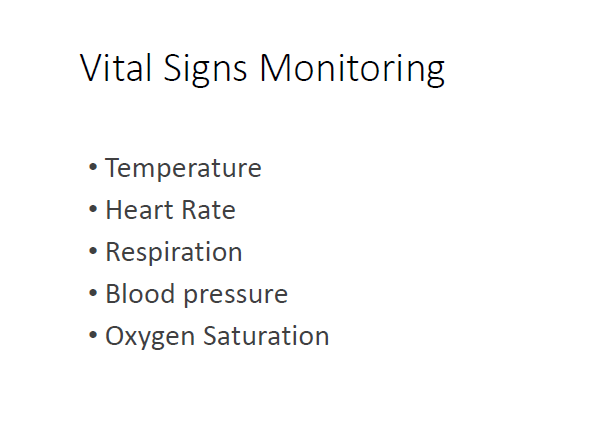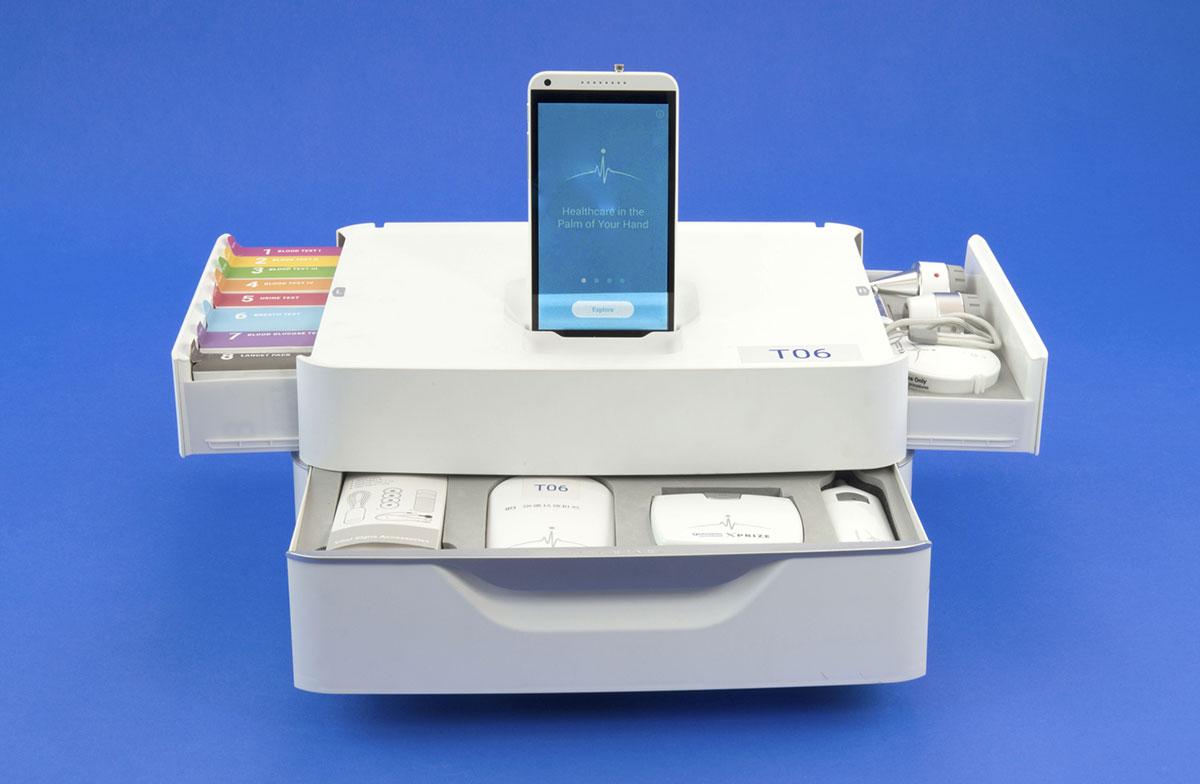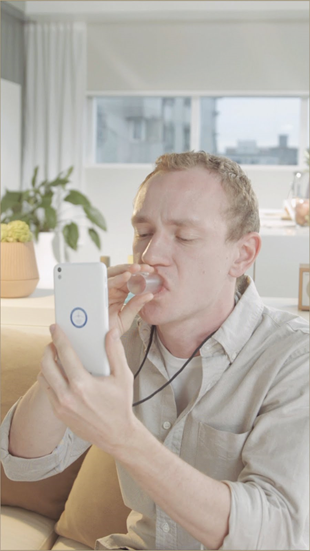A little story about my experiences on the Qualcomm XPRIZE Tricorder Challenge: $10M comp to create a Star-Trek “Tricorder”.
Goal: To create portable smart device
-
weighing <5 lbs
-
able to diagnose 13 medical dxs as well as panel of MDs
-
collect 5 continuous vital signs
Our team was composed of MDs, software/electrical engineers, material scientists, UX experts at HMS-BIDMC (Boston) and HTC (consumer electronics comp in Taiwan).
So much fun interacting with brilliant people across disciplines! dbiom.org/xprize/xprize
Our final product:
Can you imagine the challenge? Take for instance, COPD. Normally diagnosed by spirometry- but even portable ones were already >= 5 lbs.
If given this challenge, how would you have tackled this?
Well, portable devices provide an altogether different kind of data than what we’re used to. Instead of high quality, episodic data, we have myriad options of continuous, dynamic data at our disposal.
More importantly, my goal was to see how these variables interact in a dynamic manner to accurately diagnose COPD. i.e., Finding dynamic “signatures” or “fingerprints”
For example, in setting of exercise (in COPD), how would increased VO2 change:
-
Exp/Insp ratio
-
BP variability wrt respiration (e.g., pulsus paradoxus?)
-
cardiopulmonary coupling, or
-
magnitude of intercostal EMG?
How about w/ sleep or diet (carb uptake)?
If we had more time, doing these physiological analyses would have been ideal, but there were no such studies (to my knowledge) and very little physiological data to validate the analyses. Plus, we had merely 2-3 yrs to work on all these conditions.
Ultimately, we adopted an approach taken by UWash research team (SpiroSmart) and used the Cellphone microphone to capture the resonant sound frequencies which best correlated with respiratory flow: a “mini-PFT”: https://homes.cs.washington.edu/~shwetak//papers/SpiroSmart.CR.Final.pdf…
But even this “simple” test was challenging – because there is another critical factor: the USER.
In a typical PFT, the patient is coached almost aggressively to ensure full expiratory effort. We used a pinwheel to ensure full effort – but ’twas no substitute for PFT tech.
But even this "simple" test was challenging – because there is another critical factor: the USER.
In a typical PFT, the patient is coached almost aggressively to ensure full expiratory effort. We used a pinwheel to ensure full effort – but 'twas no substitute for PFT tech. pic.twitter.com/LzxpCxcyu3
— Andrew C Ahn (@AndrewCAhn2) June 13, 2019
Because this utilized a microphone, was important to be in a quiet room (no loud fans or ambient noise). Plus, one had also to maintain same distance from the phone. We used a lanyard which had to be taut all times. Very hard to do when blowing with all your might.
We did our best to provide clear, concise instructions (videos, animations, step-by-step). But even then, test subjects were often observed doing it completely wrong. e.g., blowing too soon, making sounds, or directing mouth away from microphone, etc…
The other challenge was to aggregate all available data – sociodemographics, med history, symptoms, physical tests, vital signs – to calculate final risk for COPD.
It was difficult to do, but ultimately, we devised a way to calculate risk (possible future thread).
It was a tremendous learning experience. Interestingly, teams with cool gadgets (primarily composed of engineers) actually did not perform well during testing and did not advance. Teams with strong clinician input (ideally one with engineering background) were most successful.
LESSONS:
-
Wearable data are dynamic and multimodal
-
Little research done to identify digital physiological “signatures”
-
Real-world physiological data are needed for validation
-
User experience is vital factor
-
Technology without clinician guidance is unlikely to succeed









